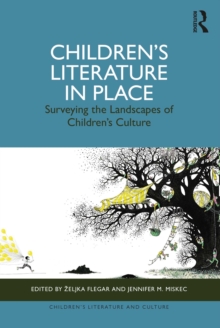
Voracious Children : Who Eats Whom in Children's Literature Paperback / softback
by Carolyn Daniel
Part of the Children's Literature and Culture series
Paperback / softback
Description
Voracious Children explores food and the way it is used to seduce, to pleasure, and coerce not only the characters within children's literature but also its readers.
There are a number of gripping questions concerning the quantity and quality of the food featured in children's fiction that immediately arise: why are feasting fantasies so prevalent, especially in the British classics?
What exactly is their appeal to historical and contemporary readers?
What do literary food events do to readers? Is food the sex of children's literature? The subject of children eating is compelling but, why is it that stories about children being eaten are not only horrifying but also so incredibly alluring?
This book reveals that food in fiction does far, far more that just create verisimilitude or merely address greedy readers' desires.
The author argues that the food trope in children's literature actually teaches children how to be human through the imperative to eat good food in a proper controlled manner.
Examining timely topics such as childhood obesity and anorexia, the author demonstrates how children's literature routinely attempts to regulate childhood eating practices and only award subjectivity and agency to those characters who demonstrate normal appetites.
Examining a wide range of children's literature classics from Little Red Riding Hood to The Lion, the Witch and the Wardrobe , this book is an outstanding and unique enquiry into the function of food in children's literature, and it will make a significant contribution to the fields of both children's literature and the growing interdisciplinary domain of food, culture and society.
Information
-
Out of stock
- Format:Paperback / softback
- Pages:266 pages
- Publisher:Taylor & Francis Ltd
- Publication Date:16/06/2009
- Category:
- ISBN:9780415803663
Other Formats
- PDF from £41.39
- EPUB from £41.39
- Hardback from £145.00
Information
-
Out of stock
- Format:Paperback / softback
- Pages:266 pages
- Publisher:Taylor & Francis Ltd
- Publication Date:16/06/2009
- Category:
- ISBN:9780415803663










